What you need to know and consider in order to grow good eggplant seedlings.
|
Eggplant is the most heat-loving plant of all grown through seedlings. They belong to the same family as potatoes and tomatoes. |
Features of culture
Eggplants grow and develop at a temperature of at least 25°C. The crop does not tolerate frost, and during prolonged cold weather in the early period of development (8-12°C), the plants do not lay flower buds, and therefore do not produce a harvest.
Eggplant seedlings grow very quickly. It is important to plant it in the ground in time. The yield of overgrown plants is significantly lower than that of plants planted on time
Selection of varieties
Eggplants, like peppers, are a long-growing crop.
In the northern regions and Non-Black Earth Region They are grown only in greenhouses. Varieties are chosen early and mid-early, so that the technical ripeness of the fruit is no more than 120 days. Early and mid-early varieties are mainly low-growing plants with medium-sized fruits. You cannot use varieties and, especially, hybrids that are not zoned in a given region. You should not plant medium and late varieties, they will not grow anyway, they will only waste your time and energy.
In the southern regions blue ones can be grown both in a greenhouse and outdoors. Varieties of all ripening periods grow well here. Tall, large and very large varieties give an excellent harvest.
Eggplants according to ripening periods are divided into:
- early, 105-110 days pass from germination to technical ripeness;
- mid-ripening - ripening period 115-125 days;
- late ones can be collected after 140 days.
The largest fruits are produced by varieties that ripen in 150 days.
|
Currently, many varieties have been bred, with fruits of different colors: dark purple, white, green, yellow. |
White varieties contain little bitterness and have a specific mushroom flavor. The yellow and orange varieties are high in carotene and taste bitter.
Land for growing seedlings
The same soil mixtures are suitable for planting eggplant seedlings as for peppers and tomatoes. The soil must be fertile, neutral, permeable, and not compacted.
Clean purchased soil with a high percentage of peat is not suitable for growing eggplant seedlings: it has an acidic reaction and a very high moisture capacity. To dilute it, use turf soil (2 parts) and sand (1 part).
Garden soil is also not suitable for planting seeds, since it is very compacted and also needs to be mixed with other components. The most suitable are turf soil and humus sand in a ratio of 2:1:1. Humus can be replaced with peat.
Fertilizers are added to self-prepared mixtures. The best option is complex fertilizers: Kemira-Lux, Agricola, etc. After preparing the soil mixture, it is checked for the reaction of the environment using litmus paper (sold in garden stores).
If the soil is even slightly acidic, ash is added to it, which not only neutralizes excess acidity, but is also an excellent fertilizer.
In case of an alkaline reaction, physiologically acidic fertilizers (ammonium sulfate) are added to the soil or, if the soil is slightly alkaline, watered with a pink solution of potassium permanganate.
How to prepare the soil for sowing seeds?
Before planting, any soil must be prepared. Most often, freezing or calcination is used.
Purchased soil cannot be calcined, since it is filled with fertilizers, and at high temperatures they are completely destroyed. Therefore, purchased soil mixture is frozen.
To do this, place it outside or in a room with sub-zero temperatures for 5-7 days. Then the soil is brought into a warm place and kept there until it is completely thawed and warmed up. The procedure is repeated 2-4 times. Do the same with self-prepared soil if fertilizers have already been added to it.
|
A few days before planting the seeds, the planting containers are filled with soil, watered, and placed in a warm place. The soil for seedlings must have a temperature of at least 25°C. |
If fertilizers are not added to the soil mixture, then it is calcined in an oven preheated to 100°C for 25-30 minutes. After the soil has cooled, fertilizers and biological products Trichodermin or Fitosporin are added to it. They cannot be added together because they contain different types of microflora. Once in the same environment, these species begin to compete with each other, mutually exterminating each other.
Technology for growing eggplants from seeds
When to plant eggplant seedlings
Growing eggplant seedlings at home is not easy. This is especially difficult to do in the middle zone and to the north. Plants are planted in the ground at the age of 60-70 days. To this period add 10 days from sowing to germination. If the seedlings are left too long, their roots will entwine the earthen ball and after planting in the ground, it will take a very long and painful time to take root. Plants bloom later and begin to bear fruit later, which for the northern regions is equivalent to a loss of harvest.
- In the middle zone, early varieties are planted for seedlings in mid-March.
- Mid-season together with pepper - in early to mid-February.
In the southern regions Eggplants are planted in a permanent place at the age of 40-50 days, so there is no need to plant seeds for seedlings too early.
- Late and mid-season varieties are planted in early March.
- Early - at the end of the month.
What is the best way to grow eggplant seedlings?
To grow good eggplant seedlings, they need to be planted in large boxes or large plastic cups. In the initial period of growth, seedlings have a rather long main root, weakly covered with sucking hairs, and a long (compared to peppers and tomatoes) stem.
Plants cannot be replanted at an early age, and when the planting is thickened, they are severely affected by blackleg. Therefore, the boxes for eggplant seedlings must be quite deep so that the crop can grow in them up to 3-4 true leaves.
|
The best option is to plant eggplants in separate plastic cups with a volume of at least 0.2 liters or milk cartons. |
Peat pots are not suitable for growing eggplants, as they inevitably acidify the soil, which is bad for the seedlings.
Growing eggplant seedlings in peat tablets will also not lead to good results, for the same reason.
Preparing seeds for sowing
Before sowing, all seeds must be treated. Usually they are soaked in a warm pink solution of potassium permanganate for 20-30 minutes, or kept in a thermos for 20 minutes, filled with water at a temperature of 55°C. Then the seeds are wrapped in gauze and soaked.
Eggplant seeds germinate quite well and do not need additional stimulation. If the seed material is old (2-3 years), then it is more difficult to germinate. To speed up the pecking of such seeds, they are soaked in a solution of growth stimulants (Epin, Zircon).
How to sow seeds correctly, video:
Sowing
Before sowing, the soil is moistened and slightly compacted so that the seeds do not go deep. The soil for planting seedlings must be heated to at least 23°C.
If planting is carried out in a common container, then sow it rarely so that there is no thickening of the crops, because the plants will grow together for a long time. Sowing is carried out according to the 4x4 cm pattern.
When grown in individual cups, place 1 seed in each cup. The crops are covered with soil and compacted again. The containers are covered with film and placed on a radiator until shoots appear.
Seed germination time
Eggplant seeds germinate better than peppers.
- Early varieties and hybrids, zoned for the middle zone and resistant to low temperatures, germinate at home in 5-7 days at a temperature of 23-25°C.
- Late southern varieties germinate in 10 days at the same temperature.
- If the temperature is 20-22°C, then any seeds hatch in 10-12 days.
- At soil temperatures below 18°C, seedlings do not appear.
Seedling care
After the first shoots appear, the boxes and cups are placed in a bright and warm window. The emerging seedlings have a rather long stem (3-4 cm) and a very weak root system. Eggplants at the cotyledon stage stretch out very easily and quickly if they are not maintained correctly.
- Additional lighting. With the appearance of the first shoots, the seedlings begin to receive additional light. The containers are placed directly under the lamps and illuminated for at least 10 hours in February, 6-8 hours in March. In cloudy weather, additional lighting of plants is increased by 1-2 hours.
|
In sunny weather, seedlings must be exposed to the sun. |
- Temperature. You can grow eggplant seedlings only at a temperature of at least 20°C. When the first shoots appear, the plants are placed on the windowsill, where the temperature is not lower than 17°C. After a few days, the temperature is raised to 23-26°C. At temperatures below 17°C during the day and 15°C at night, eggplants do not grow.
- Watering. Eggplants require moderately moist soil during the initial growth period. During the cotyledon period, they are watered as the earthen clod dries out. When 1-2 true leaves appear, watering is increased, otherwise, due to lack of moisture, lignification of the lower part of the stem occurs. The earth should not dry out.
- Feeding. Eggplants love nitrogen fertilizing, but at home, if there is insufficient light, they are not given, since the plants become very elongated and lie down. Fertilizing begins when the first true leaf appears. If the seedlings do not begin to grow for more than 10 days, then they will have to be fertilized, despite the absence of a real leaf.
The fertilizer must contain nitrogen, but in limited quantities. The most suitable for fertilizing are Uniflor-Micro, Agricola, Orton-seedlings for tomatoes, and special complex fertilizers for seedlings.
Feed the seedlings once a week. If it is very stretched, then feeding is carried out once every 10 days.
Picking seedlings
In the northern regions, it will not be possible to grow eggplant seedlings without picking. It grows for a long time (about 2-2.5 months), so it will become crowded in any pot.
In the south, eggplants are grown without picking.
Picking is carried out when the crop has 2-3 true leaves. There is no point in picking plants earlier, since their root system is practically not formed, and the thin and long stem will inevitably break.
|
At the age of 1-1.5 months, eggplants tolerate picking much better than peppers. |
Planting from a box is carried out in separate pots with a volume of at least 1 liter. From plastic cups, seedlings are planted into cups of larger volume. The size of the pot must be selected in such a way that in the next 1.5 months the culture does not feel crowded in it.Pour soil into pots, make a hole in it and water it well.
Before picking, water the soil in the box generously, carefully dig out the plant with a spatula and transfer it to a new pot. When planting, hold eggplants only by the leaves and dive very carefully, otherwise the fragile stem will break. The main root, if it is too long, is shortened by 1/4. The culture quickly restores the root system. But if the root bends upward, this will significantly slow down the growth of the plant.
If the seedlings are long, then the crop is buried in the soil up to the cotyledon leaves; if it is normal, then it is still planted somewhat deeper than it grew previously. The soil is lightly crushed, and the picked seedlings are placed for 2-3 days in a place with a temperature of 18-20°C, so that they are not exposed to direct sunlight.
The main thing is to reduce leaf evaporation to a minimum in the first 2-3 days after picking, then the plants will take root well and quickly begin to grow.
Video about growing blue seedlings:
Caring for seedlings after picking
After picking, the eggplants take root well, there are very few lunges. In April, the plants no longer get enough light. If it is sunny days, they must be taken out to an insulated loggia or to a well-lit windowsill. Sunlight has a beneficial effect on the growth of seedlings.
|
The seedlings have large leaves and a thin stem, so they often fall to the side. To prevent this, the crop is tied to a peg. |
- Watering carried out 2-3 times a week, since at this time the crop is actively growing and quickly consumes water. Watering can be combined with fertilizing. The water should be settled and at room temperature. Watering can be significantly limited if hydrogel is added to the pots before picking. It is very convenient at home.The culture itself takes the amount of water it needs as needed. The soil in the container is watered once every 14 days, and only if the leaves have withered.
- Feeding. To grow good seedlings when fertilizing, you should not overuse nitrogen. Plants grow very quickly, and in the presence of available nitrogen, the crop's stem becomes very elongated to the detriment of the development of roots and leaves. Fertilizing is done once every 10 days with the same fertilizers as in the early period.
- Hardening. Grown seedlings are much more resistant to cold weather. It can tolerate temperature drops of up to 16°C during the day, and can tolerate temperatures of 13°C at night without any visible changes.
The crop is hardened 2 weeks before planting in the ground. Eggplants are taken out onto the balcony or into a greenhouse if the temperature there is not lower than 15°C and left for the whole day. If the weather is cool, then the windows in the room are opened, but the doors are closed, since the culture does not tolerate drafts.
Planting seedlings in the ground is carried out only when the soil warms up to 20°C and the threat of frost has passed.
Failures when growing eggplants
- Seeds don't sprout. If they are fresh and do not germinate, the temperature is too low. The soil must be warm, at least 20°C, and the air temperature, at least 23°C. If it is impossible to create such conditions, then it will not be possible to grow good eggplant seedlings.
- Shoots don't grow. Temperature too low. It is necessary to increase it to 23°C. Seedlings may be stunted due to poor lighting. Eggplants definitely need to be illuminated.
To grow strong seedlings, they cannot be fed with humates.
- Plants stretch. The elongated stem is a biological feature of eggplants. Seedlings always have a long stem.If the seedlings stretch out, it means either there is not enough light, or there is too much nitrogen in the fertilizing. The culture at an early stage of growth is illuminated for at least 10 hours a day. Optimal is 12-hour supplementary lighting. When feeding, reduce the dose of nitrogen and increase the dose of potassium. At home, avoid fertilizing with humates. Feed the plants once every 10 days.
- Culture is not developing well. The illumination is too long. Eggplants at the beginning of growth do not like long daylight hours. In March, 6-8 hours of illumination is enough for them. And only when planting seedlings in February does it need additional lighting 12 hours a day. In April, the plants do not get enough light.
- Lignification of the stem. Insufficient watering. The culture is watered 2-3 times a week, and only when grown on hydrogel can it be watered once every 2 weeks.
- Blackleg. A terrible disease that can destroy seedlings completely. It occurs especially often in thickened crops when growing eggplants in boxes. Plants at the seedling stage suffer more severely. Affected specimens are removed, the rest will have to be picked. Eggplant seedlings are very difficult to pick, but this will allow you to save at least something, since there is never a 100% attack. If the seedlings are completely lost, sowing is carried out again, if time permits.
It is quite difficult to grow good eggplant seedlings at home, especially for beginners. This capricious culture is not for everyone.
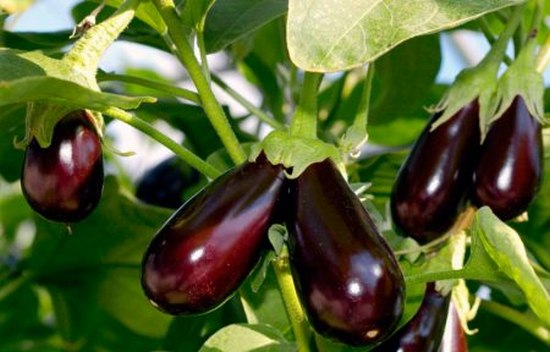
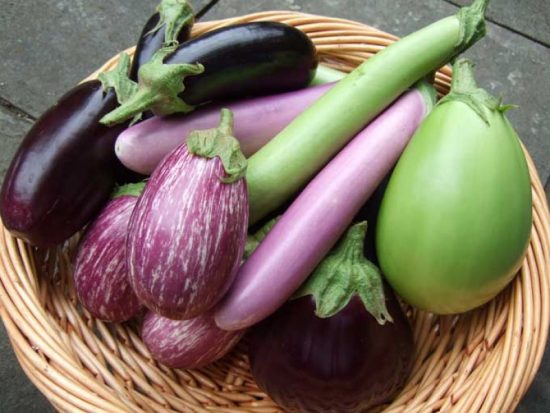
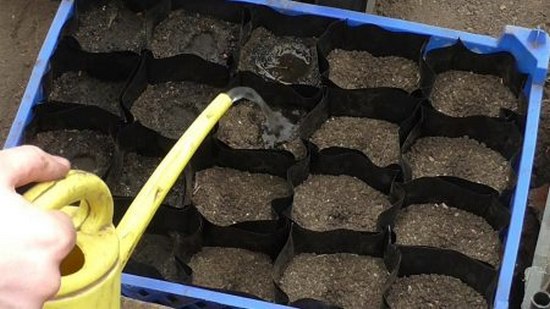
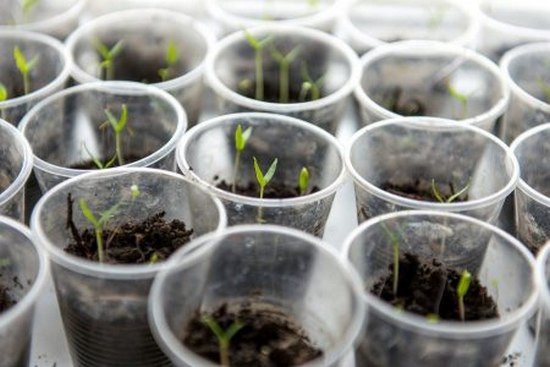
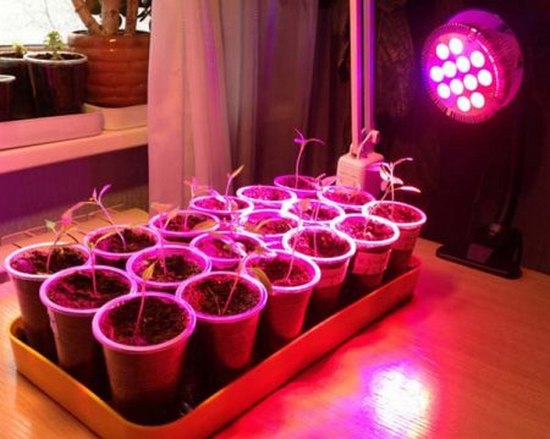
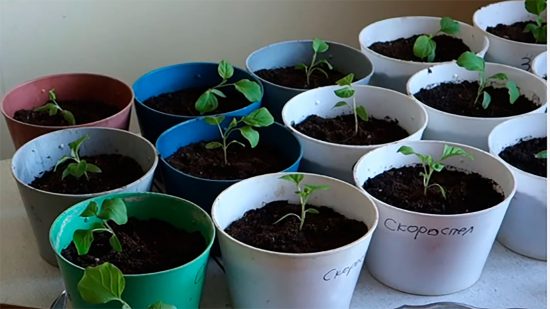
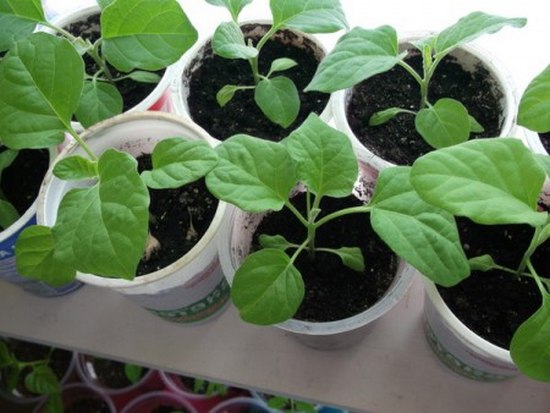
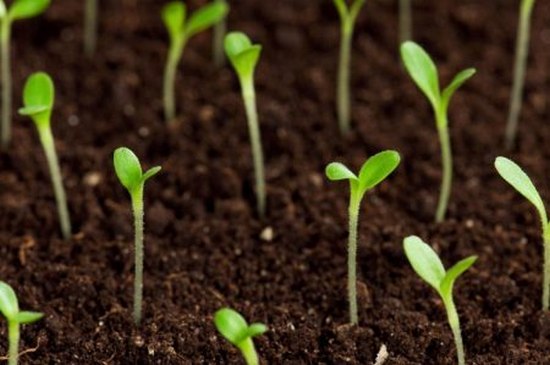

 (12 ratings, average: 4,42 out of 5)
(12 ratings, average: 4,42 out of 5) CUCUMBERS NEVER GET SICK, I'VE BEEN USING ONLY THIS FOR 40 YEARS! I SHARE A SECRET WITH YOU, CUCUMBERS ARE LIKE THE PICTURE!
CUCUMBERS NEVER GET SICK, I'VE BEEN USING ONLY THIS FOR 40 YEARS! I SHARE A SECRET WITH YOU, CUCUMBERS ARE LIKE THE PICTURE! You can dig a bucket of potatoes from each bush. Do you think these are fairy tales? Watch the video
You can dig a bucket of potatoes from each bush. Do you think these are fairy tales? Watch the video
 How our fellow gardeners work in Korea. There is a lot to learn and just fun to watch.
How our fellow gardeners work in Korea. There is a lot to learn and just fun to watch. Eye trainer. The author claims that with daily viewing, vision is restored. They don't charge money for views.
Eye trainer. The author claims that with daily viewing, vision is restored. They don't charge money for views. A 3-ingredient cake recipe in 30 minutes is better than Napoleon. Simple and very tasty.
A 3-ingredient cake recipe in 30 minutes is better than Napoleon. Simple and very tasty. Therapeutic exercises for cervical osteochondrosis. A complete set of exercises.
Therapeutic exercises for cervical osteochondrosis. A complete set of exercises. Which indoor plants match your zodiac sign?
Which indoor plants match your zodiac sign? What about them? Excursion to German dachas.
What about them? Excursion to German dachas.